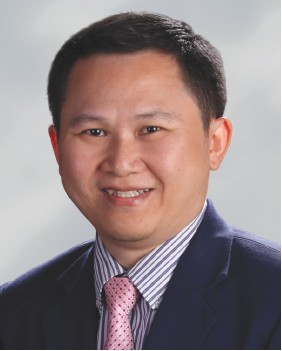Fainting in children: Syncope or Seizure
Main Article Content
Abstract
OBJECTIVES: The purpose of this study was to identify the etiologies and to assess the diagnostic usefulness of electroencephalogram (EEG) study in children with fainting.
MATERIALS AND METHODS: A retrospective review was conducted at the Bangkok Child Health Center, Bangkok Hospital. Fulfilled criteria enrolled pediatric population under 18 years of age with history of fainting or syncope-like attacks who had completed cardiologic and neurologic work up including chest x-ray, electrocardiogram (ECG), echocardiogram, a standard 24 hours Holter monitoring, Tilt-table testing and at least one standard EEG recording.
RESULTS: Fainting in children is predominant in girls. Seizure or epilepsy is the second most common etiology (12.5%) preceded by syncope (77.5%) either reflex syncope, orthostatic syncope or that which is cardiac in origin. Our study demonstrated a greater yield of EEG study in identifying causes of fainting than other previous studies.
CONCLUSION: Obtaining a detailed illness and witness account is of cardinal importance and very helpful in determining the etiology of fainting. Proper investigations should be tailored to individual patients. EEG recording plays a significant role in patients with historical uncertainty or those with a history strongly suggestive of seizures.
Article Details
This is an open access article distributed under the terms of the Creative Commons Attribution Licence, which permits unrestricted use, distribution, and reproduction in any medium, provided the original work is properly cited.
References
2. Ruckman RN. Cardiac causes of syncope. Pediatr Rev 1989;9:101-8.
3. McHarg ML, Shinnar S, Rascoff H, et al. Syncope in Childhood. Pediatric Cardiology 1997;18:367-71.
4. McLeod KA. Syncope in childhood. Arch Dis Child 2003;88:350-3.
5. The Task Force for the Diagnosis and Management of Syncope of the European Society of Cardiology (ESC). Guidelines of the diagnosis and management of syncope (version 2009). European Heart Journal 2009;30:2631-71.
6. Commission on Classification and Terminology of the International League Against Epilepsy 1989. Proposal for revised classification of epilepsies and epileptic syndromes. Epilepsia 1989;30:389-99.
7. Ross B, Grubb B. Syncope in the child and adolescent. In: Grubb B, Oshlansky B, eds. Syncope: mechanisms and management. New York: Futura, 1998:305-16.
8. Farwell D, Sulke N. How do we diagnose syncope?. J Cardiovasc Electrophysiol 2002;13 : 9-13.
9. Massin MM, Bourguignont A, Coremans C, et al. Syncope in pediatric patients presenting to an emergency depart ment. J Pediatr 2004;145:223-8.
10. Massin MM, Malekzadeh-milani S, Benatar A. Cardiac syncope in pediatric patients. Clin Cardiol 2007;30:81-5.
11. Bo I, Carano N, Agnetti A, et al. Syncope in children and adolescents: a two-year experience at the Department of Paediatrics in Parma. Acta Bio 2009;80:36-41.
12. Gordon T, Moodie D, Passalacqua M, et al. A retrospective analysis of the cost-effective workup of syncope in children. Cleve Clin J Med 1987;54:391-4.
13. Abubakr A, Wambacq I. The diagnostic value of EEGs in patients with syncope. Epilepsy Behav 2005;6:433-4.
14. Zivin L, Marsan CA. Incidence and prognostic signifi cance of epileptiform activity in the EEG of non-epileptic subjects. Brain 1969;91:751-78.
15. Bridgers SL, Ebersole JS. Ambulatory cassette EEG in clinical practice. Neurology 1985;35:1767-8.
16. Pires LA, Ganji JR, Jarandila R, et al. Diagnostic pattern and temporal trends in the evaluation of adult patients hospitalized with syncope. Arch Intern Med 2001;161: 1889-95.
17. Sheldon R, Rose S, Ricthie D, et al. Historical criteria that distinguish syncope from seizures. J Am Coll Cardiol 2002;46:142-8.
18. McKeon A, Vaughan C, Delanty N. Seizure versus syncope. Lancet Neurol 2006;5:171-80.
19. Eiris-Punal J, Rodriguez-Nunez A, Fernandez N, et al. Usefulness of head-upright tilt test for distinguishing syncope and epilepsy in children. Epilepsia 2001;42: 709-13.
20. Bignole M, Menozzi C, Moya A, et al. Implantable loop-recorder: towards a gold standard for the diagnosis of syncope? Heart 2001;85:610-2.
21. Kenny RA, Ingram A, Bayliss J, Sutton R. Head-up tilt: a useful test for investigating unexplained syncope. Lancet 1986;1:1352-5.
22. Benditt DG, Ferguson DW, Grubb BP, et al. Tilt table testing for assessing syncope. American College of Cardiology. J Am Coll Cardiol 1996;28:263-75.
23. Morillo CA, Klein GJ, Zandri S, et al. Diagnostic accuracy of a low-dose isoproterenol head-up tilt protocol. Am Heart J 1995;129:901-6.
24. Bartoletti A, Alboni P, Ammirati F, et al. ‘The Italian Protocol’: a simplified head-up tilt testing potentiated with oral nitroglycerin to assess patients with unex plained syncope. Europace 2000;2:339-42.
25. Parry SW, Gray JC, Baptist M, et al. ‘Front-loaded’ glyceryl trinitrate-head-up tilt table testing: validation of a rapid first line tilt protocol for the diagnosis of vasovagal syncope. Age Ageing 2008;37:411-5.


